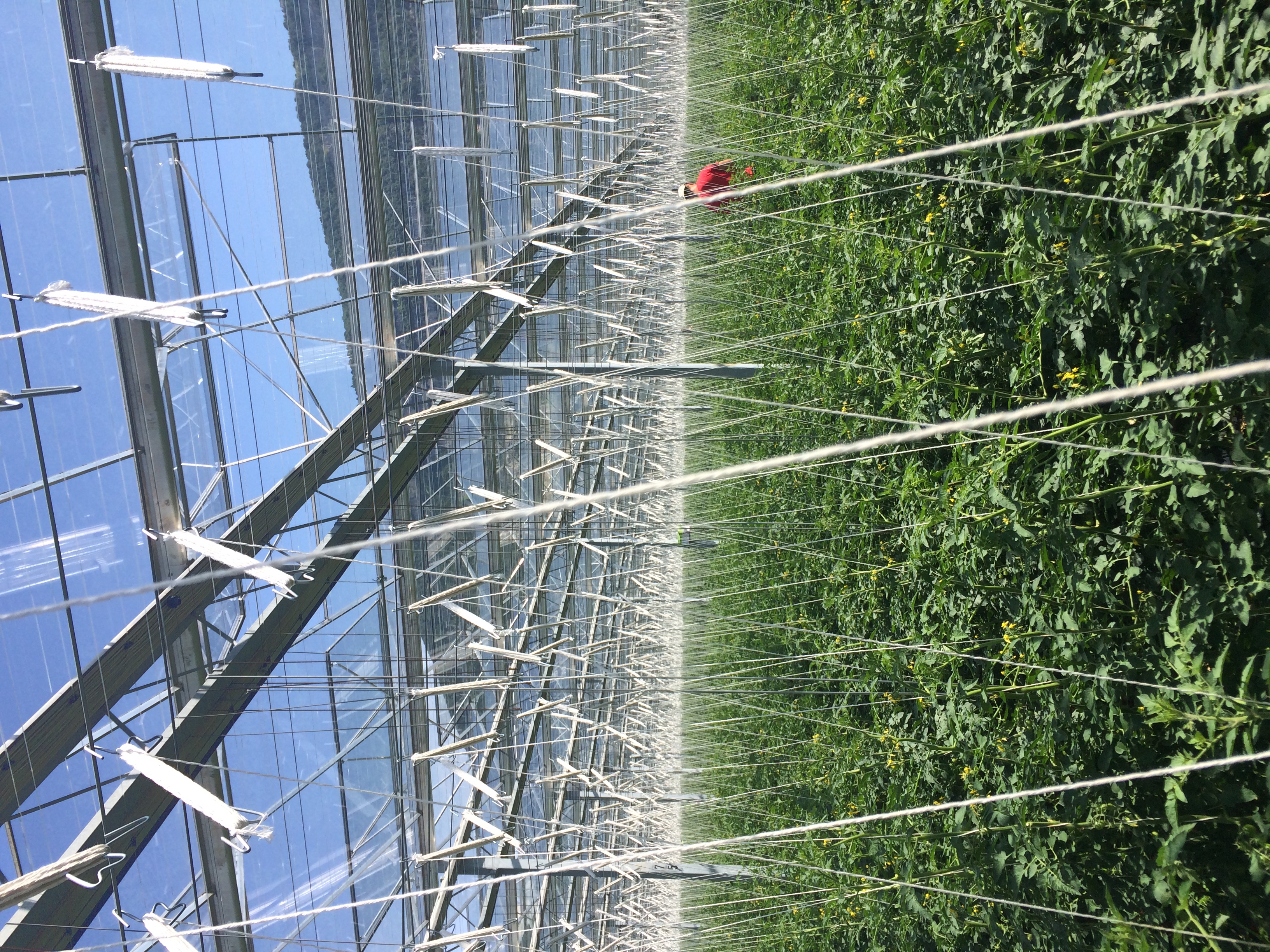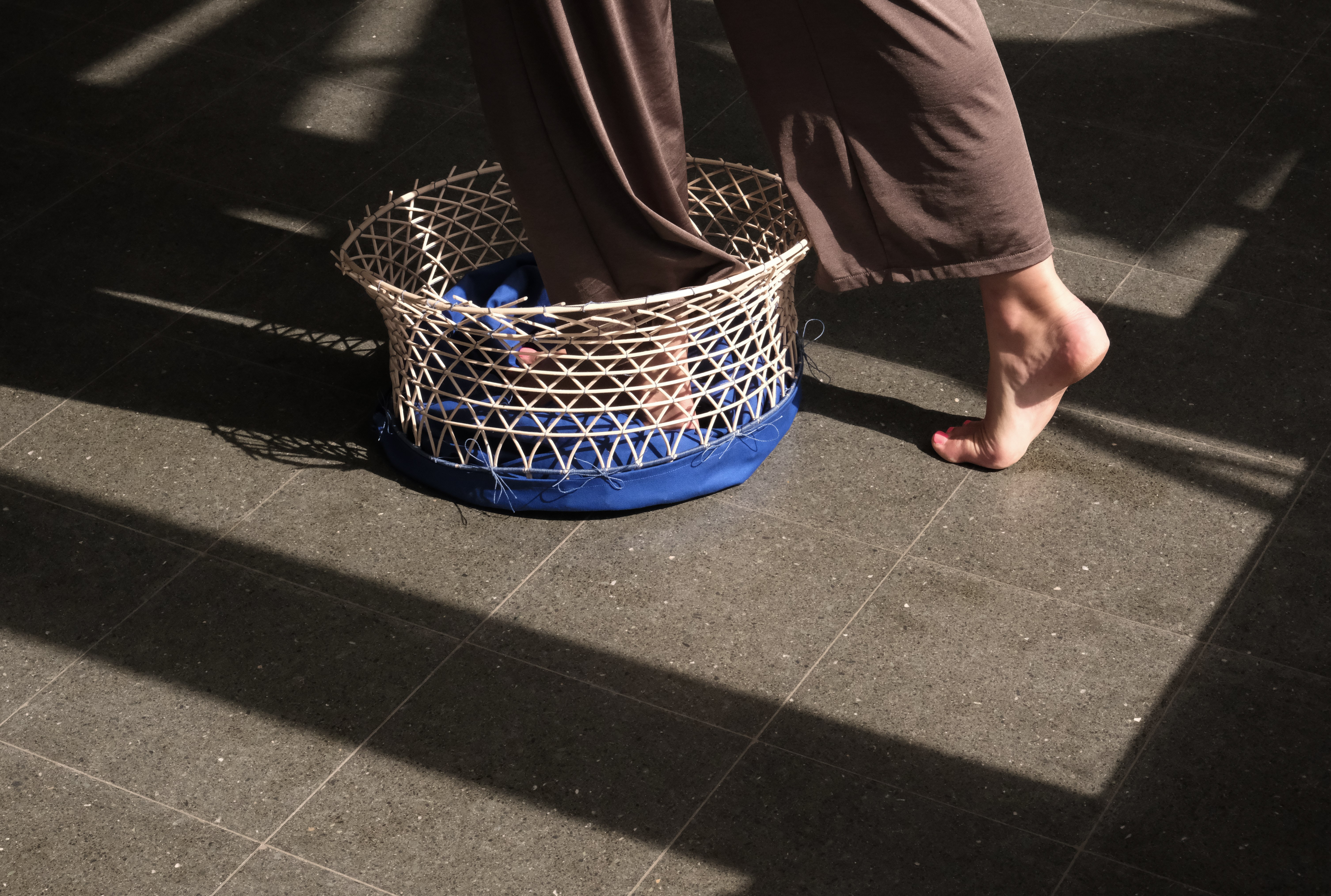


 Second picture by Benjamin Mouly. Last two pictures by Ode Windels.
Second picture by Benjamin Mouly. Last two pictures by Ode Windels. Woven Seasons
It was the shade and the orchard (video and performance)
Contributor: Claire Chassot
Performer: Joséphine Tilloy
Camera and editing: Benjamin Mouly
Are there expressions of seasonality inside greenhouses?
How do seasons resist artificialisation of agriculture?
Do greenhouses create new seasons ?
What are the rhythms present in soilless agriculture?
Greenhouses are artificial spaces where humans and non-humans cohabit through a deep network of relationships enhanced by the use of technology. While working in a soil-free tomato production in Switzerland, I observed that the growth of the fruits was still linked to the presence of different living beings and living matters. Seasonality resists the many different ways the industrial farmer tried to control its rhythms and to extend the harvest time. When the seasons as meteorological cycles are no longer a constraint, other rhythms reveal their importance. Because heat, sunlight and rain no longer influence the growth of plants, the farmer is facing irreducible cycles such as the growth of a fruit, the lifetime of a bumblebee.
"In the living world, the habitat of someone is always the weaving of all the others."
This quote from Baptiste Morizot encapsulates what I am exploring in It was the shade and the orchard, the first project of my ongoing research Woven Seasons, consisting of a performance and a video. During the performance, dancer Joséphine Tilloy embodies the different rhythms and movements I observed in the greenhouse: the invisible growth of plants, the movements and daily rituals of workers, and pollinators' wanderings. All of them, and even more, participate to produce tomatoes. The dancer carries a rattan accessory inspired by baskets, tools, and plants. This accessory has several roles: as a mere use object, sculpture, costume, or as an architectural element. Its changing status relates to all the uses we extract from plants. The basket is also an important image as it is linked to the movement of ‘picking up something’, which is one of the remaining gestures resisting mechanization and one of the first gestures human beings learn. The video shows the performance in a persil greenhouse in Koekelare (a village in West-Flanders, Belgium).
Woven Seasons is an ongoing research. I keep an eye out for the gestures of the gatherers, their intentions and very diverse expressions. I also remain attentive to the effects of exchanges between what is being harvested and who or what is harvesting. Finally, I pursue my explorations of newly visible seasonal rhythms and my practice of vegetal weaving, which strongly echoes within the theoretical path I'm on.
The first project of Woven Seasons, It was the shade and the orchard, was shown for the first time in the group exhibition of Seasonal Neighbours in Z33. The performance took take place in the hallway of the museum on the opening night. At the end of it, the basket-costume stayed at the entrance of the exhibition as a reminder that visitors are somehow gatherers too.
Biography Claire Chassot
Many thanks to Franky Vantyghem, Nadine Vandromme and the municipality of Koekelare to support this project.